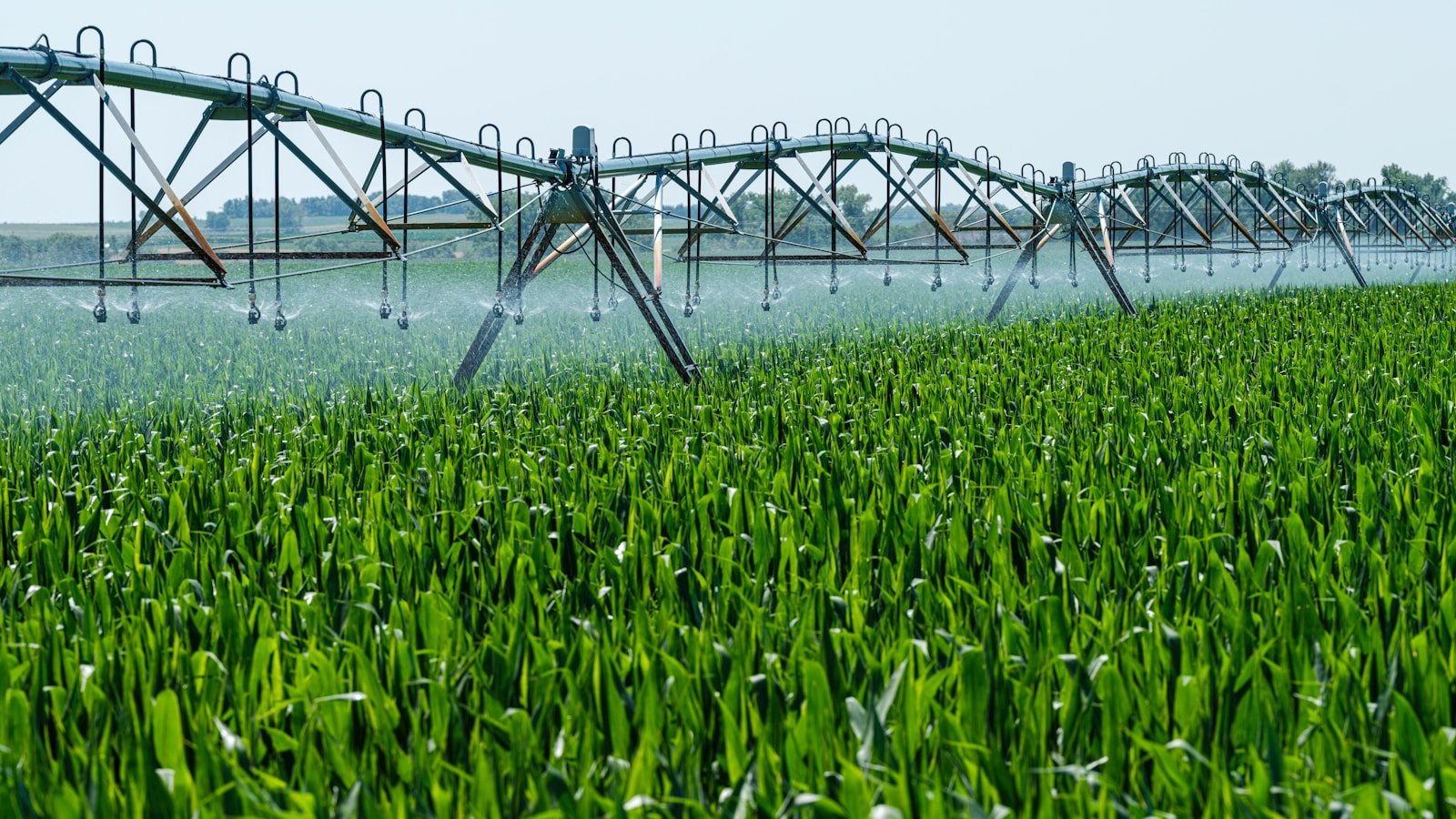Few companies have stirred as much controversy and debate as Monsanto. This corporate giant, once a pioneer in the development of genetically modified organisms (GMOs) and agricultural biotechnology, has left an indelible mark on the global food system. However, as concerns over the safety and sustainability of conventional farming practices continue to mount, an increasing number of people are turning to organic alternatives.
This article delves into the history of Monsanto, exploring its rise to prominence, the controversies surrounding its products and practices, and the growing consumer demand for organic foods. By examining the scientific evidence, historical accounts, and personal stories, we aim to shed light on this polarizing topic and provide readers with the knowledge and tools necessary to make informed decisions about their food choices.
According to a report by the Organic Trade Association, the global organic food market was valued at $120 billion in 2020, with a projected growth of over 12% annually. This surge in popularity reflects a growing awareness of the potential health and environmental benefits associated with organic farming methods.
Table of Contents
- The Rise of Monsanto
- Controversies Surrounding GMOs and Pesticides
- Organic Farming: A Sustainable Alternative
- The Benefits of Organic Foods
- Transitioning to an Organic Lifestyle
- Additional Resources and Further Reading
- Practical Tips and Actionable Advice
- Conclusion
The Rise of Monsanto
Monsanto’s journey began in 1901 as a small chemical company founded in St. Louis, Missouri. Over the decades, the company expanded its operations, eventually becoming a leading producer of agricultural chemicals, including the infamous insecticide DDT and the highly controversial herbicide Agent Orange, used during the Vietnam War.
In the 1980s, Monsanto shifted its focus to biotechnology, investing heavily in the development of genetically modified crops. The introduction of Roundup Ready crops, engineered to withstand the company’s flagship herbicide Roundup, marked a significant turning point in the global agricultural landscape.
Controversies Surrounding GMOs and Pesticides
Monsanto’s genetically modified crops and associated pesticides have been at the center of numerous controversies and debates. Critics argue that the widespread use of these products has led to the emergence of herbicide-resistant “superweeds,” increased pesticide use, and potential health risks for consumers.
Additionally, concerns have been raised about the potential environmental impact of GMOs, including the potential for gene transfer to non-target species and the potential harm to beneficial insects, such as bees and butterflies.
Despite these concerns, Monsanto has consistently defended the safety and efficacy of its products, citing numerous scientific studies and regulatory approvals. However, the controversy surrounding the company’s practices has fueled a growing movement towards organic and sustainable agriculture.
Organic Farming: A Sustainable Alternative
Organic farming is an approach to agriculture that emphasizes the use of natural methods and excludes the use of synthetic fertilizers, pesticides, and genetically modified organisms. By working in harmony with nature, organic farming aims to promote biodiversity, soil health, and environmental sustainability.
Organic farmers employ a variety of techniques, including crop rotation, composting, and the use of natural pest control methods, such as beneficial insects and companion planting. These practices not only minimize the environmental impact of agriculture but also promote the long-term fertility and resilience of farmlands.
The Benefits of Organic Foods
Proponents of organic foods cite numerous potential benefits, both for human health and the environment. Here are some of the key advantages associated with organic produce:
- Reduced Pesticide Exposure: Organic foods are grown without the use of synthetic pesticides, reducing the risk of exposure to potentially harmful chemicals.
- Higher Nutrient Levels: Some studies suggest that organic produce may contain higher levels of certain nutrients, such as antioxidants and beneficial compounds.
- Environmental Sustainability: Organic farming practices promote soil health, biodiversity, and water conservation, contributing to a more sustainable agricultural system.
- Preservation of Ecosystems: By avoiding synthetic chemicals and genetically modified organisms, organic farming helps protect delicate ecosystems and the species that inhabit them.
Transitioning to an Organic Lifestyle
As consumer demand for organic products continues to grow, more individuals are seeking ways to incorporate organic foods into their daily lives. However, making the transition can seem daunting, especially due to the perceived higher costs and limited availability of organic options in some areas.
In this section, we will explore practical strategies for gradually transitioning to an organic lifestyle, including tips for identifying trustworthy organic certifications, sourcing organic produce, and incorporating organic products into your daily routine.
Understanding Organic Certifications
Not all products labeled as “organic” are created equal. To ensure you’re purchasing genuine organic products, it’s essential to understand the different certifications and labels used by reputable organizations.
In the United States, the United States Department of Agriculture (USDA) oversees the National Organic Program, which establishes standards and regulations for organic certification. Products bearing the USDA Organic seal must meet strict guidelines regarding the use of synthetic substances, genetic engineering, and farming practices.
Sourcing Organic Produce
As the demand for organic foods grows, so do the options for sourcing organic produce. Here are some strategies to consider:
- Local Farmers’ Markets: Seek out local farmers’ markets in your area, where you can often find a wide selection of organic produce directly from the growers.
- Community Supported Agriculture (CSA): Consider joining a CSA program, where you can receive a weekly or monthly box of fresh, locally grown organic produce.
- Grocery Stores: Many mainstream grocery stores now offer dedicated organic sections, making it easier to find a variety of organic products.</
- Online Retailers: For those with limited access to local organic sources, online retailers can be a convenient option for purchasing organic produce, pantry items, and other organic products.
Incorporating Organic Foods into Your Diet
Transitioning to an organic lifestyle doesn’t have to be an all-or-nothing endeavor. Consider starting small and gradually incorporating more organic options into your diet. Here are some tips to help you get started:
- Prioritize the “Dirty Dozen”: Focus on buying organic versions of the fruits and vegetables that are most heavily contaminated with pesticides, according to the Environmental Working Group’s “Dirty Dozen” list.
- Meal Planning: Plan your meals in advance and incorporate organic ingredients wherever possible. This can help you make mindful choices and reduce food waste.
- Explore New Recipes: Experiment with new recipes that showcase the flavors of organic produce and ingredients. This can make the transition more enjoyable and help you discover new favorites.
- Grow Your Own: Consider starting a small garden or container garden to grow your own organic herbs, vegetables, or fruits. This can be a rewarding and cost-effective way to incorporate organic produce into your diet.

Additional Resources and Further Reading
To deepen your understanding of organic living and the complexities surrounding Monsanto and the agricultural industry, consider exploring the following resources:
- Books: “The World According to Monsanto” by Marie-Monique Robin, “Organic Manifesto” by Maria Rodale, and “The Omnivore’s Dilemma” by Michael Pollan offer in-depth perspectives on these topics.
- Documentaries: Films like “Food, Inc.,” “The Future of Food,” and “GMO OMG” provide compelling visual narratives and interviews with experts and stakeholders.
- Websites and Organizations: Reputable sources like the Organic Trade Association, the Environmental Working Group, and the Non-GMO Project offer valuable information and resources on organic living and sustainable agriculture.
- Local Community Groups: Join local meetup groups, attend workshops, or connect with local organic farmers and advocates to learn more about the organic movement in your area.
Practical Tips and Actionable Advice
Meal Planning and Budgeting
Incorporating organic foods into your diet can be more cost-effective with proper planning and budgeting. Here are some tips to help you get started:
- Plan your meals in advance and make a shopping list to avoid impulse purchases.
- Buy in bulk when possible, especially for non-perishable organic items like grains, nuts, and dried fruits.
- Consider joining a local food co-op or buying club to access discounted organic products.
- Prioritize organic options for the foods you consume the most, and opt for conventionally grown produce for lesser-consumed items.
Reading Labels and Identifying Organic Products
Navigating the world of organic labels can be confusing, but understanding the terminology can help you make informed choices. Here’s a quick guide:
- “100% Organic”: These products must contain only organically produced ingredients and processing aids.
- “Organic”: At least 95% of the ingredients must be organically produced, with certain exceptions for non-organic items.
- “Made with Organic [Ingredient(s)]”: The product contains at least 70% organic ingredients, and the remaining non-organic ingredients must be approved for use in organic production.
Supporting Local Organic Farmers
Supporting local organic farmers not only provides you with fresh, locally grown produce but also contributes to the growth of sustainable agriculture in your community. Consider joining a CSA program, attending farmers’ markets, or participating in community-supported agriculture initiatives to directly support local organic farmers.
Conclusion
The legacy of Monsanto and the ongoing debate surrounding genetically modified organisms and conventional farming practices have sparked a global movement towards organic alternatives. As consumers become increasingly aware of the potential health and environmental impacts of modern agricultural practices, the demand for organic foods continues to soar.
By embracing organic farming methods and supporting sustainable agriculture, we can contribute to a healthier planet and promote the long-term viability of our food systems. While the transition to an organic lifestyle may seem daunting at first, taking small steps and incorporating practical strategies can make the journey more manageable and rewarding.
Ultimately, the choice to adopt an organic lifestyle is a personal one, but it’s a choice that can have far-reaching impacts on our health, the environment, and the future of food production. By educating ourselves, supporting local organic farmers, and making mindful choices at the grocery store, we can all play a role in shaping a more sustainable and ethical food system.


Leave a Reply